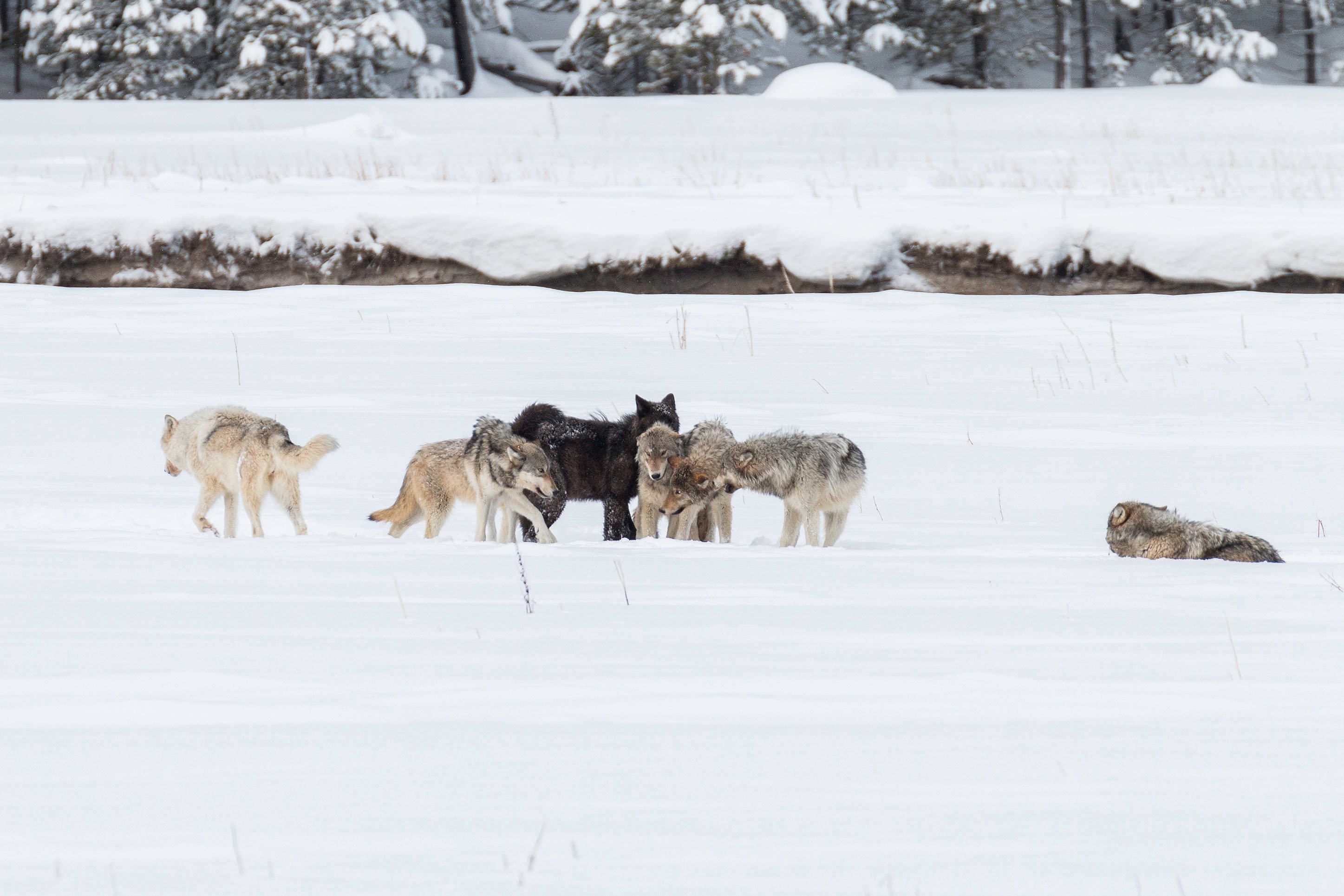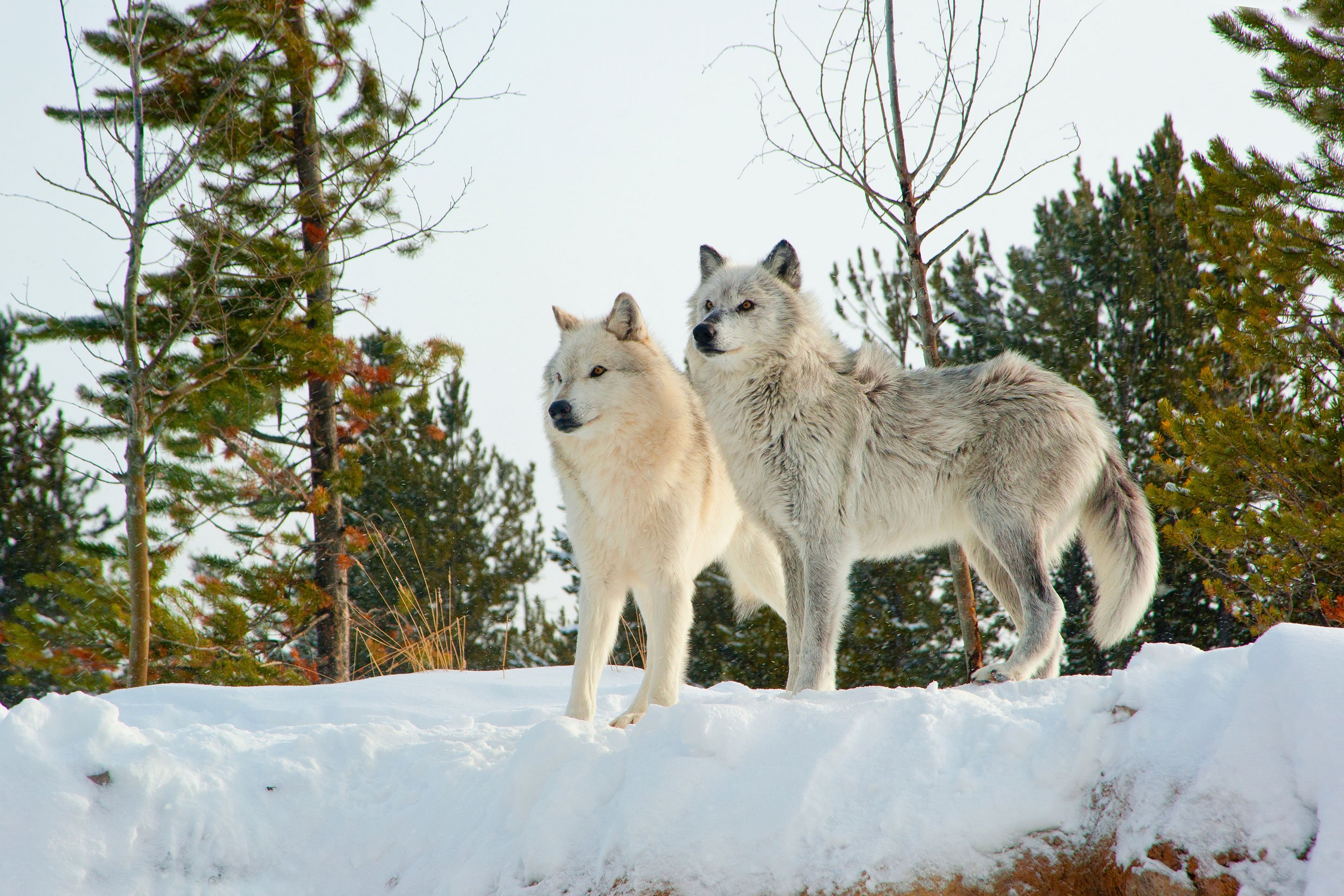Winter Wolf Watching in Yellowstone
The wild wolf is a majestic, powerful, and mysterious creature. Yellowstone National Park wolves in particular have long been the subject of intrigue and controversy, right up to a recent storyline on the hit show “Yellowstone.” But what’s not in dispute is that wolves are essential to the balance of nature in Yellowstone National Park, and if you get the chance to observe them in their natural habitat, it will be an experience you won’t forget.
A brief history of Yellowstone’s wolves
The establishment of Yellowstone as the United States’ first National Park in the late 1800s attracted more human activity and a sharp increase in the hunting of wolves. By the 1920s, the number of wolves in Yellowstone had dropped precipitously low, upsetting the balance of predator and prey and the delicate ecosystem in the Park. In the first program of its kind, wild wolves from Canada were reintroduced to Yellowstone in the mid-1990s. Now there is a healthy population of over 100 wolves in the Park, and their presence has restored equilibrium to the greater Yellowstone ecosystem in multiple ways, affecting several different species of plants and animals and their place within the Park.

Canis lupus vs Canis familiaris
Even if you’re a dog lover with canines of your own, encountering one or more wild wolves and hearing their howls is an entirely different, out-of-this-world experience (unless of course, they are right outside your tent, in which case your own animal instincts may be activated). Compared to your average golden retriever, wolves are larger, stronger, more powerful, and of course, totally wild, meaning that no matter how cute a wolf puppy may be, it will never respond to all human demands. Always remember that a wolf is a wild animal, and keep a safe (and legal) distance of at least 100 feet or more.
Best places to see wolves in Yellowstone
The Northern Range expanse of Yellowstone National Park, and more specifically, the Lamar Valley between Gardiner and Cooke City, is probably the best place to see wild wolves in the Park. Often called the Serengeti of North America owing to its abundant wildlife, the Lamar Valley is a playground for many wolf packs in the wintertime because their prey (bison and elk) tend to congregate in lower elevations during the colder months. Wolves are more active in wintertime, making it an ideal time to visit, and if there’s snow, you’ll have an even better chance of spotting the wolves’ dark coats against the bright landscape. Be sure to plan any wildlife-watching excursions for early morning or evening when the wolves engage in mating behaviors, hunt prey, or play in the snow.

Finding a wolf tour in Yellowstone
Probably one of the best ways to see wolves in Yellowstone is to join up with a local tour or guide. Ranging from a few hours to a few days in length, these tours can get you to the best places with the right gear and make your experience much more comfortable and effective. Companies currently offering a variety of wildlife excursions include Yellowstone Forever, Yellowstone Wild, and Yellowstone National Park Lodges. While booking a tour is no guarantee that you will see wolves or other wildlife, working with a guide who knows the Park will definitely increase your chances and give you a richer educational experience. And no matter what animals you end up seeing, the incredible backdrop of Yellowstone National Park is always worth the trip.
If you haven’t visited Yellowstone National Park, you’re missing out on the experience of a lifetime! Check out our guide to the park in winter or summer here.
If you enjoyed this blog, take a look at some of our other related articles:
- Ranking the 14 Best Hot Springs in Montana
- Top 10 Things To Do in Yellowstone
- Bozeman Breweries: Enjoying The Best Beer Around Town
- 3 Scenic Hikes in Yellowstone
- 4 Spots to Go Fly Fishing in Bozeman
- 5 Things to do in Hyalite Recreation Area For Every Activity Level
In our never-ending quest to keep up with all things new in Bozeman, we have been producing content for years and can't possibly update every blog when new businesses open or existing businesses close. Please reference the publish date and do your own due diligence when making plans.


